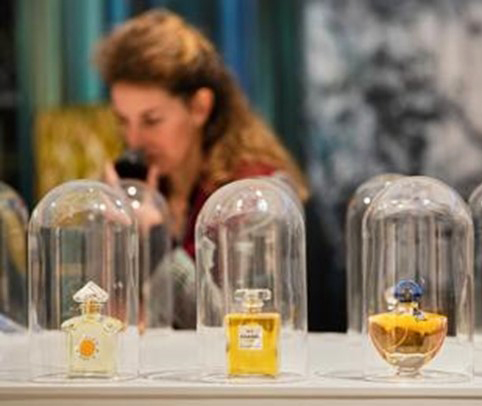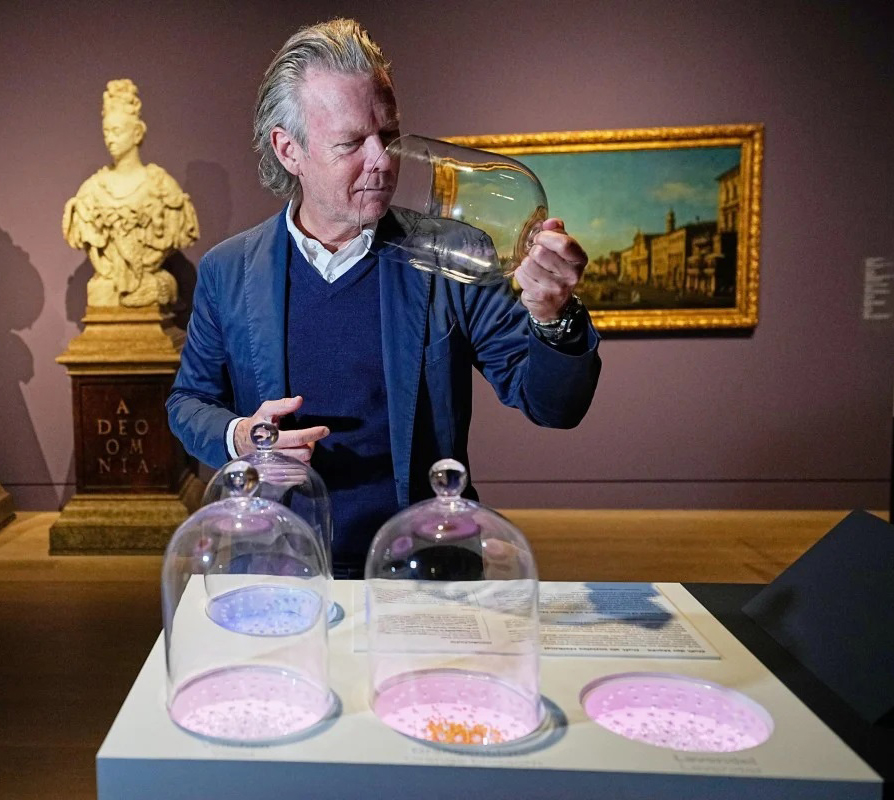German scents
Ever wondered what war smells like? Or ponder the odor of love, or the stench of medieval Paris, or the sacred fragrance of religion? A new exhibition in Germany allows visitors to discover unknown worlds of smells by sniffing their way through 81 different fragrances across 37 different galleries. The show “The Secret Power of Scents,” which opens to the public on Wednesday at the Kunstpalast museum, in the western city of Düsseldorf, combines fragrances with art, taking visitors on a journey of more than 1,000 years of cultural history. “This exhibition is an experiment — and an invitation for our audience to discover the history of scents with their noses,” said Felix Krämer, the museum’s director general. The exhibition follows a chronological order, from religious artifacts of the Middle Ages through to contemporary art of the 21st century. The various galleries are equipped with scent steles, (oversized brady snifters) atomizers and diffusers to create a connection between the art and the smell of a specific time period or cultural context.
Waves of myrrh waft through a darkened gallery of Christian wood carvings depicting various scenes from the Bible. Christianity, but also Judaism and Islam used myrrh as a symbol for prayer and purification, the show explains. Scents evoke direct emotional reactions more strongly than any other of our senses. So it comes as no surprise that visitors almost retreat in fear when they press a button in a gallery about World War I. The scent released from the diffuser was created by mixing the pungent smell of gunpowder with the metallic odor of blood and sulfur. “Anyone who has ever experienced war, conventional war, will hate it, because you can actually smell the brutality of war here,” said Robert Müller-Grünow, the show’s curator and a leading expert in the field of scent and scent technology.
“It’s the first exhibition worldwide to bring scents into a museum in this form, format and scale,” he said. On the other side of the fragrance spectrum, there’s the Venus and Adonis painting from 1610 by Flemish artist Peter Paul Rubens showing two lovers. “This room is all about passion and emotions,” said Müller-Grünow, adding that the smells diffused here are dominated by roses and the scent of the civet — a cat whose scent was considered erotic in the 17th century, but made today’s visitors turn up their noses in disgust.
Certain smells also connect to different eras of history — pressing the button to release the stench of medieval Paris made some visitors choke when they inhaled a mix of sewage, mold and unwashed bodies. On the other hand, in a gallery dedicated to the Roaring 20s, there’s an oil painting by Gert Wollheim from 1924, called Farewell from Düsseldorf, which celebrates the liberation of women, who at the time began wearing bold lipstick, bobbed their hair and smoked cigarettes in public. The room is filled with the uplifting scent of tobacco, vanilla and leather — a mixture that’s a nod to famous early fragrances such as the historic Tabac Blond which was launched by the fragrance house Caron in 1919. Bring your nose to Dusseldorf.
Odiferous levity
Perfume commercials don’t make sense,
They sell them.
Did you hear about the person who spent over $1 million in the perfume shop?
They had more money than scents.
What fragrance makes you smell like a four hundred million bucks?
Elon’s Musk.
What tastes better than it smells?
Your tongue.
October 31st Birthdays
1993 – Vanessa Marano, 2000 – Danielle Rose Russell, 1994 – Nadine Lustre, 1998 – Sydney Park
1950 – John Candy, 1964 – Rob Schneider, 1952 – Nick Saban, 1936 – Michael Landon




